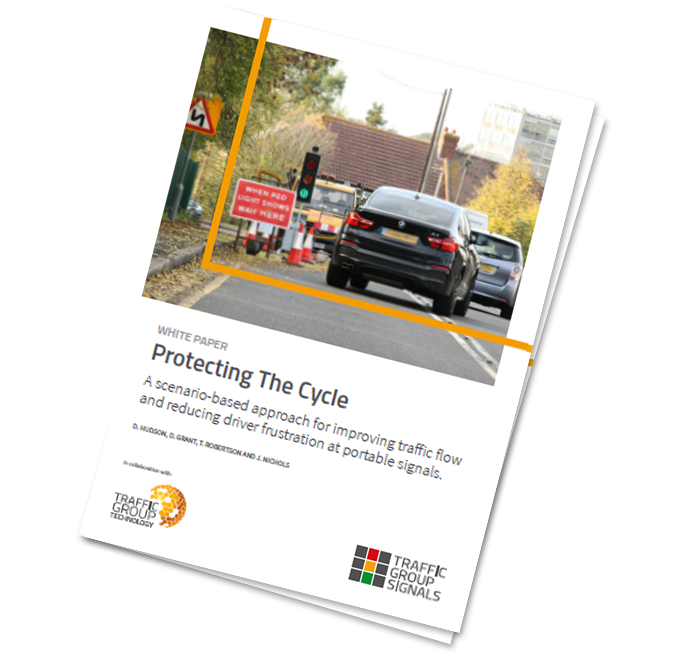This update focuses on the value of validating signal performance in real-world application vs. desktop simulations or data modelling.
How does Data Modelling work?
Desktop data modelling works by simulating the movement of vehicles through a virtual site, and commonly used when installing permanent systems. The vehicle movements and their behaviours have been developed over a number of years, and are based on expected behaviours in normal conditions. The virtual site can be based on an existing location, which allows for benchmarking with existing signal configurations.
What are the limitations of Data Modelling?
Micro-simulation can only work well when the conditions you are modelling are relatively typical of the conditions that the model is well exercised in modelling, i.e. the models have been repeatedly tested and validated for accuracy against real-world data. Where simulation can provide useful insight, studies have shown that models are often found to underestimate delays, reinforcing the need for real-world validation.
Data Modelling and Roadworks
There are a number of challenges faced with data modelling and roadworks, not least that every site presents a different challenge.
- Drivers act very differently in the unfamiliar and stressful environment that roadworks create for some road users – this can’t be encapsulated in data modelling.
- Models don’t take account of the imperfect nature of roadworks, the placement of signage or unexpected occurrences can influence driver behaviour
- Driver behaviour changes after they have waited in a very long queue. For example, people end up using phones more or can become impatient/aggressive.
Furthermore, you simply can’t model what you are not expecting, there are many instances we’ve experienced during real-world trials that don’t exist within models.
For example:
-
- Bus stops not suspended close to works or even within works.
- Bin lorries that decide to do a full bin run through the works.
- Motorists running red much more than at permanent junctions.
- Motorists shown green who don’t move (possibly on their phone).
- Motorists who pull up 20m before the WAIT board.
- Vehicles entering or existing from driveways within the works and stopping traffic.
- Tailbacks into the works caused when longer green times co-incident with issues at a nearby set of lights or junction or parking space.
Every site is different, and each presents its own unique challenges that can only be understood within the live environment itself.
Real World Data
Real World data is information collected in a live, uncontrolled environment. This trial should be reflective of the application in which the product is used, without trying to influence the outcome in any way. Simply observing the product in use at the roadside could influence the way drivers behave, thus impacting the accuracy of the data being collected.
By testing products in these conditions, you can ensure they meet the requirements set out within the product development.
How can you record Real World Data?
A standard measure for assessing the impact of roadworks on the network is the journey time of vehicles through the site. This can be recorded through the use of ANPR (number plate recognition) cameras that track vehicle movements from entry to exit of a location.
It is also possible through human observation, CCTV etc. but this may provide data which is suitable for qualitative purposes only and not produce reliable metrics.
Conclusion
In the majority of cases, it is necessary to use both forms of data when developing new products, particularly where safety is involved. Lab-based data modelling and testing can provide a good level of confidence that a technology will work, but only real-world data can reliably and accurately prove product performance.
AutoGreen Trials
When developing AutoGreen, we moved from data modelling into live trial sites as we wanted to truly measure the efficacy of our technology in improving efficiency and safety at road works. The value of real world data has been pivotal in demonstrating the performance of AutoGreen to customers and Highways Authorities, leading it to become approved as a viable alternative to manual control in several counties.
Furthermore, the additional insight gained from real world data and live product trials has been able to feed into our product development for AutoGreen and enabled us to rethink how intelligent multi-phase works should be delivered.
Download the AutoGreen Whitepaper
In this paper we share the real world data of our AutoGreen trials conducted across a number of live sites.
Download
